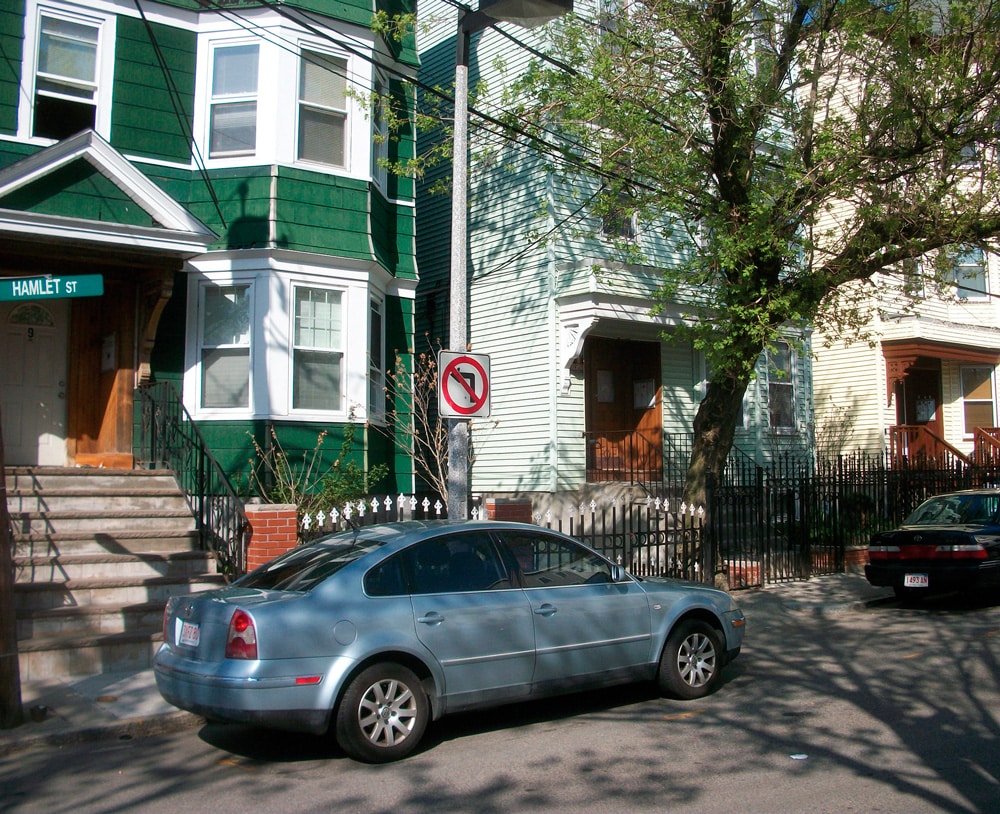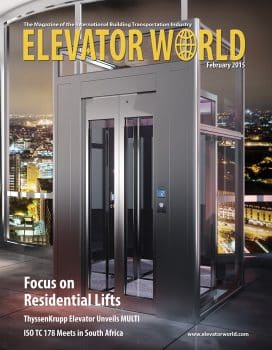Climate Change and the City
Feb 1, 2015

In this Readers Platform, your author examines vertical transportation’s ever-increasing role in a more urban, environmentally conscious future.
We live in a world of astounding and ever-increasing change. In the U.S., slogans from both the right and left call for change without specifying content. Change in itself is the desired goal. Does that apply to our climate? Is climate change a good thing? More on that later. First, let’s look at what changes in real-estate development mean for horizontal and vertical circulation markets.
Pondering this sea of uncertainly, an overview of national real-estate development is helpful. While home construction is robust in many parts of the world, it has been anemic in the U.S. since the 2008 economic downturn. Things haven’t been better in the office and retail sectors. As 2014 closed, the national volume of housing construction was hardly back up to what it had been in 2006. Interestingly, more of it was in the form of apartments, which typically use safe, reliable, user-friendly elevator services in the innards of mid-and high rise buildings. More and more, elevators are part of everyday life. If only horizontal circulation were so easy!
America Re-Embraces the City
More American housing construction is now urban in nature, filling in gaps in the urban fabric. For decades, most activity was on greenfields away from urban cores. However, the American Dream of a life that includes a single-family house with an ample yard and room to park the many vehicles that come with car-centered living has grown a bit stale. A rising number of seniors want more pizzazz in life, which may take the international set to Costa Rica or Portugal. Others are happy in such U.S. states as Florida and Arizona. Still others crave the variety and resources of city neighborhoods, sharing streets and shops with people of varied color, language and lifestyle.
Today, apartments make up one-third of all residential construction, and that share is rising. As suburbs grew and flourished in the second half of the 20th century, they drained scarce infrastructure funds, sending some central cities into fiscal tailspins. The post-World War II move to the suburbs changed the way Americans live their lives. Today, most suburbs are firmly rooted and won’t go away. Many will continue to grow. Yet, the trend toward more development in and around downtowns, on sites planning experts label urban “infill,” is notable. Such development involves more challenges and complications than found in more maneuverable greenfields.
Four-fifths of today’s residential development is still on the low-density metropolitan fringe. One-fifth is in clusters of multistory buildings and need vertical systems. In 10 years, this percentage and need are likely to be even higher. If new, often mixed-use nodes are dense enough and located in districts tilted to car-free lifestyles, parking needs are lower, and the feasibility of flexible, light-scaled, horizontal circulation services goes up. Carefully designed versions of modestly scaled circulation systems should be able to fit right in. If done well, this would, again, change American lifestyles.
One of the main advantages Americans see in this re-embrace of city living is the ability to get around without a car. In dense districts, one may walk to many of the places he or she frequently visits: convenience stores, nearby transit stations, parks, libraries and restaurants. Walking is healthy and builds community life though face-to-face contact people in cars cannot enjoy. A local meeting point for personal, commercial and civic activity is nicest when it can be readily accessed by foot. Growing legions of seniors and alternative-lifestyle households are reclaiming old urban neighborhoods.
Because of climate change, one caveat: watch out for oceanfronts. Before we get to this imperative to make oceanfront infrastructure more robust, let’s look more closely at a leading example of desuburbanization.
Leaving the ‘Burbs
The long trend in the dispersal of residential, retail and office properties to low-density, sprawling suburbs has stopped. More popular and climate friendly in the long run will be dense zones with pedestrian, biking and public-transit infrastructure. This means more living in and visiting buildings that need vertical-mobility infrastructure. Demand prospects are good for elevators, sometimes escalators and, perhaps, even moving walks.
Leading the way in the re-embrace of urban life is New York City (NYC). In the early 1990s, 15% of residential construction in the tri-state New York region was in the city that never sleeps. Eighty-five percent was in the suburbs. During subsequent recovery years, NYC’s share of its region has jumped to 48%, according to a report from the Shorenstein Center on Media, Politics and Public Policy at Harvard University. The numbers for Chicago and Atlanta show a similar trend: 7%-27% and 4%-14%, respectively.
New buildings in densifying districts bring competition for parking and street space, leading to time lost in traffic congestion and hunts for parking. District managers who want to discourage driving have an array of options to enable local mobility for short distances. An array of mobility devices has emerged. Motorized carts for people with walking restrictions are increasingly visible on U.S. streets. With modern designs, they are comfortable and safe, often including collision-avoidance electronics. Advances in connected vehicle technologies and related ground infrastructure will soon bring to our streets self-driving vehicles and significant spinoffs: cheaper, more reliable e-cabs.
Given all these options, more and more people in mobility-assisted districts will shrug off the cost and hassle of owning a car. Demand for transit, taxi, mini rentals and ridesharing will rise. They can all be coordinated with elevator infrastructure and designed for public convenience.
Getting Climate-Rugged
There is joy, but also pain, in oceanfront property. The pain is getting worse with climate change. Exposed coastal areas have inherent risks that are getting worse. Happily, more robust civil infrastructure can mitigate these risks. Like everything in life, however, there is a cost.
According to the World Bank, we are running out of time. If we don’t act to contain climate change, the problem will intensify. We need to respond now. The Sierra Club recommends we eschew fossil fuels for clean (solar, wind, hydro and geothermal) energy by 2030.
For storm-vulnerable districts, more robust design and higher construction standards are required for such infrastructure as streets, sidewalks, stormwater drainage systems, retaining walls and parking facilities. This also applies to public and private buildings. Facing the next tidal surges, communities around the world are already impacted. This new attitude is influencing elevator design and programs to ensure reliable service and quick responses to emergencies. Insurers, property managers and public-works officials are already facing new and costly challenges.
How can urban infrastructure protect increasingly vulnerable districts and their buildings and local utility connections, including mobility? Civic leaders and policymakers are resetting their givens, adjusting to a new normal.
The New Jersey shore sustained US$37 million in damage from Hurricane Sandy more than two years ago. In response, the U.S. Department of Housing and Urban Development held a rebuilding design competition. Soon, US$920 million will be awarded to the creators of six proposals. The Center for Advanced Urbanism at the Massachusetts Institute of Technology’s School of Architecture + Planning has engineered one that enhances the Meadowlands delta to better absorb tidal surges. Wetlands management and tightened land-use regulation are key.
Oceanfront infrastructure – including elevators, escalators and moving walks – will need to be designed to withstand heightened flooding and wave action. Interestingly, horizontal circulation systems elevated above street level have distinct advantages when the ground is covered by 1 ft. of water.
Interweaving Horizontal and Vertical for Density
Last September, approximately 100 world experts on advanced horizontal circulation systems gathered outside Stockholm, Sweden, for the 8th International Podcar City Conference, organized by the Institute for Sustainable Transportation (IST). IST is convinced we are capable of building safe circulation services that mimic taxis – a public service with levels of service so much higher than those of conventional buses, trams and streetcars as to be transformational. Two weeks later, the People’s Climate March and United Nations Summit on Climate Change in NYC brought new interest in ways to restructure urban mobility so green modes – walking, biking, ridesharing and transit – reduce greenhouse-gas emissions. Living free of an automobile powered by fossil fuels for daily life is easier in dense, well-elevatored districts. A condo or townhouse in a cluster of mid-rise buildings may soon be a key feature of the new American Dream, leaving suburban houses in the carbon dioxide belched out by the excessive number of vehicles on their roads. The 9th Podcar City conference will further explore how automated transit networks and elevators intersect tomorrow’s dense urban development. It will take place in on November 4-6 in Silicon Valley, California. For more information, visit www.podcar.org.
Get more of Elevator World. Sign up for our free e-newsletter.








